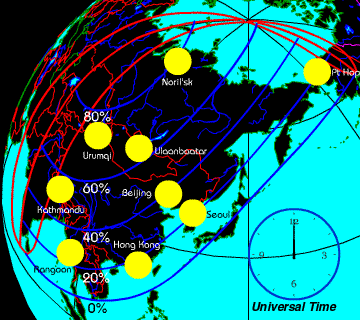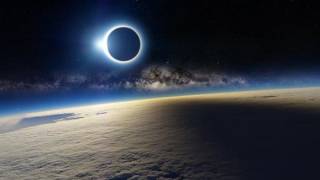Solar Eclipse & Pluto Eclipse
Source: spaceweather.com
Solar Eclipse: On March 19th around 0230 UT, the Moon will pass in front of the Sun, producing a partial solar eclipse visible from Russia, India, China and the northern reaches of Alaska. In those places the normally-round sun will turn into a crescent and cast strangely-curved shadows on the ground.Visit spaceweather.com for more information, and check back on March 19th for photos from the eclipse zone.
Pluto Eclipse: Astronomers from Texas to California with be watching Pluto Sunday morning, March 18th, when the dwarf planet sweeps across a red, 15th magnitude star in the constellation Sagittarius. Pluto's atmosphere was discovered as a result of such an occultation in 1985. When a star goes behind Pluto, its light is not extinguished abruptly, as if hidden by a sharp edge, but rather gradually--a sign that Pluto is surrounded by a fuzzy layer of gas.
Astronomers now use stellar occultations to monitor Pluto's atmosphere.
Pluto is receding from the Sun and at some point it may become so cold that its atmosphere freezes and falls to the ground. NASA's New Horizons spacecraft is rushing to catch Pluto (ETA: 2015) before that happens. On March 18th, we'll find out if Pluto's atmosphere is still "up in the air."
Amateur astronomers with large backyard telescopes and CCD cameras should be able to record the occultation. Visit spaceweather.com for observing tips.























